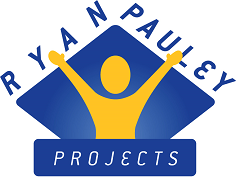How much skill development do your students receive when asked to present an Oral Presentation? Is there a program that your students follow to develop their Speaking Skills? Are teachers equipped with the necessary resources to teach Presentation Skills?
The answers to these questions have assumed a significant level of importance with the introduction of the National Curriculum and the renewed emphasis it places on the teaching of speaking skills. Time pressures and competing interests often mean that there are insufficient lessons to develop the skills of students. I would like to propose a means by which Oral Speaking Skills can be developed.
A developmental Speaking Skills Program is best implemented in the early years of secondary school when students are more receptive to curriculum ideas and more time is available in an English Program. It also means that when students are required to complete Oral presentations in their senior years they will be more attuned and knowledgeable.
Teaching Orals in a classroom needs a new shift in thinking. Whenever I start an Oral Task I change the dynamics of the classroom. Desks are moved to the side and chairs are arranged in a semi-circle format. What this shows to the students is that there is something different about learning Speaking Skills.
My initial aim is improve the Impromptu Speaking Skills of my students. Students cannot help become better Prepared Speakers if they become good Impromptu Speakers.
Lesson Opening
I spend the first five minutes of the lesson playing one of the many speaking games that can be found in a variety of sources. Three examples to consider are Fortunately/Unfortunately, Round Robin and Name that Star.
Fortunately/Unfortunately starts with the teacher telling a story… “As I was driving to school today I was involved in a car accident… Fortunately I was not injured but my car was a mess…. Unfortunately”… you then pass the story on to the first student asking them to start with the word Unfortunately. The story passes around the circle being added to as it progresses and alternates from Fortunately to Unfortunately.
Round Robin is a similar game but with no intention of a coherent flow to the story. The teacher starts the story and moves it around the class controlling the story by saying STOP and the word that the next student must begin with.
…eg ” Suddenly the the doors “…STOP … doors —the next student must begin their talk with doors… “Doors are meant to be…”
I next move on to using Impromptu Speaking in a more structured format. I have found that by teaching students a range of different formulae they can present clear, seemingly structured speeches that have an Opening, a Body and a Conclusion. The formulae enable them to place all their energies into thinking about the content and not panic about the structure of what they might say next. These Impromptu Speaking formulae can be started in a small group situation of initially four students and expanded when the students feel comfortable with this style of speaking. I eventually aim at having a student speak to the entire class with no notes or preparation time. The length of time this takes seems to be about 5 to 7 periods.
Lesson Content
Here is a matrix of a structured way to introduce the teaching of Speaking Skills in three main areas—-Informative, Reflective and Persuasive.
| Speech Type | Openings | Conclusions | Voice | Body Language | Writing to Speak | Devices | Audience Analysis | Speech Material | Speech Planning | Use of Notes | Preparing to Speak |
| Inform-ative Oral | ShockQuestionPromise | Reinforce Key Information | PacePauseEmphasis | StanceEye Contact | Simpler, more direct language that sounds like you speak | MetaphorsSimilesAlliterationSignposts | ‘Gap’ analysis | A Creative ApproachSupport Material | Planning an Informative Oral | Using Minimal Notes | Techniques to minimise nervousnessCorrect Preparation |
| Story Telling | Create a LinkSpecial Effects | Share Personal Learning | VolumeInflectionArticulationTone | Facial ExpressionGestures | Use of repetition and sounds | OnomatopoeiaTripletsPun | Choosing a Story | Story Telling Techniques | Review | Review | |
| Persuas-ive Oral | QuotesStory | Call to Action | Review for Persuasive Use | Movement | Immediacy | CatchphrasesRhyme | ‘WIIFM’ analysis | Components of a Persuasive Presentation | The Persuasive Speaking Formula | Review | Review |
All these Lessons have the following elements:
Teacher Input, Powerpoint slides and an Exercise that the students can be given to work on in class.
The Lessons are structured. For example, students are not introduced to every possible Opening or Speaker’s Device that they need to know in their Senior Years. Rather they can be introduced and added to during the early Years, re-visited in Year 11 and merely require a short refresher ‘brush-up’ in Years 12.
So what I am arguing for is that this entire curriculum area of Oral Presentation Skills can be taught systematically, innovatively and developmentally. Content can be taught, skills can be practised and achievement can be noted. In my experience students taught in this manner change from shy, reluctant speakers to quite confident and well developed speakers. The use of Impromptu techniques allied with valid teaching content and exercises to extend students all unite to create a structured and popular approach.
